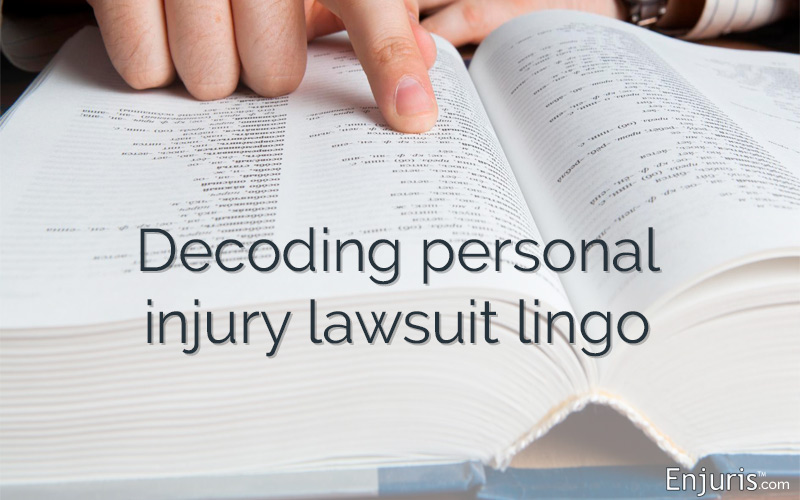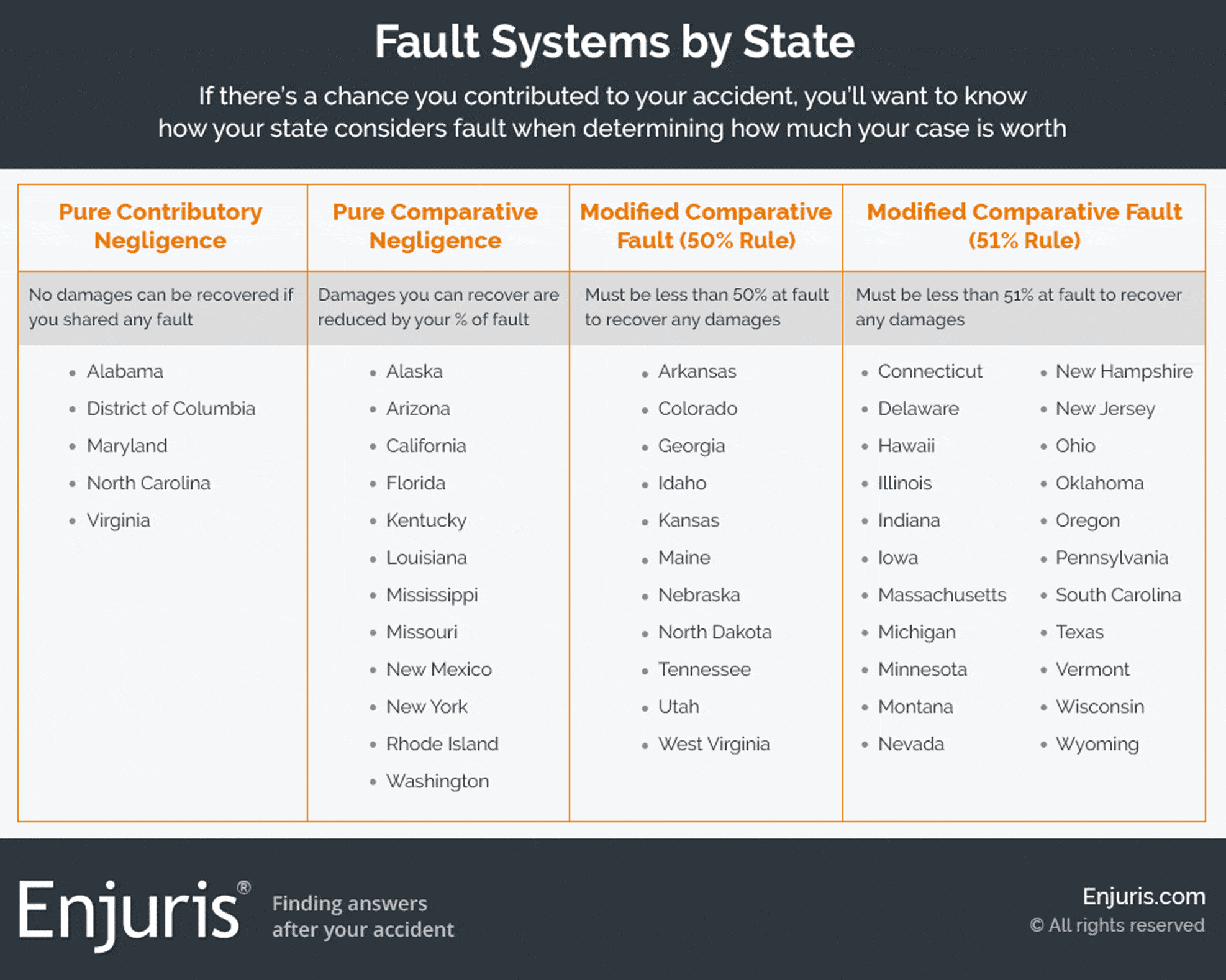
More than words: Learn the legal terminology to make sense of your lawsuit
Being involved in a lawsuit can be an intimidating process. Your lawyer is there to help and guide, but they might also use words or phrases that are unfamiliar. This glossary will help break down the words and basic legal terms you’re most likely to hear as you move through the courts and litigation process.
-
Criminal case:
A criminal case is when an individual has been arrested and charged with a crime. A private citizen cannot file a criminal case against another person; this can only be filed by a federal, state, or local government. If you’re a victim of a crime, you can press charges, but it’s ultimately up to the prosecutor to determine whether the person will be arrested. Penalties in a criminal case could be probation, fines or financial penalties, community service, or imprisonment.
-
Civil lawsuit:
A civil lawsuit is when a plaintiff has been injured or wronged and sues a defendant for damages. The damages (what you can “win” in a lawsuit) are in the form of money that’s intended to recover what you lost.
The following basic legal terms all refer to civil personal injury lawsuits.
Filing a claim
Plaintiff: The plaintiff is the person who files a lawsuit because they’ve been injured or wronged. There’s no plaintiff in a criminal case; the entity that brings the suit is the government (prosecutor).
Defendant: The defendant is the person or entity being sued. A defendant can be an individual, a company, organization, or government. There can be multiple plaintiffs and defendants in a single suit.
Injury: An injury could be either a physical injury (broken leg, head injury, etc.), emotional injury (pain and suffering), wrongful death, defamation of character, or financial loss (loss of property, assets, past or future earnings, breach of contract, or others). The purpose of the civil court system is to make a plaintiff whole. In other words, it’s to restore a plaintiff to the condition they were in before the injury occurred. Sometimes this isn’t possible — you can’t always reverse a physical injury, bring back a deceased loved one, or restore someone’s career or reputation in the community — but the court system is designed to compensate the plaintiff with a sum of money that will restore what has been lost, even if money can’t fix the actual injury.
Damages: Damages are the money recovered in a lawsuit, and they can be either economic or non-economic. Money is money, of course, but “damages” is the word that refers to what you receive the money for. Here’s the difference between the three main types of damages available in a civil case:
- Economic damages: Damages that can be counted or quantified. For example, a court can determine exactly how much a plaintiff lost in medical expenses, lost wages, or replacement or repair of a home, vehicle, or other property.
- Non-economic damages: These are inspecific as to what their actual value would be. It might include things like pain and suffering, damage to reputation, anxiety, and other injuries that are not tangible and cannot be counted.
- Punitive damages: If a defendant’s action was especially reckless, a court might award the plaintiff punitive damages, which is an additional amount of money that is specifically to punish the defendant.
Complaint: Your lawyer will file a document called a “complaint” in order to initiate the lawsuit with the court. The complaint lists each claim for which you want to be awarded damages.
Answer: After your lawyer files the complaint, the defendant will have a specified period of time to file an “answer”, which is how they intend to respond (whether they believe they are liable or not liable, and for what portion of the damages).
Statute of limitations: The law sets forth time periods in which you’re able to file a lawsuit, and those are based on the type of case and the state. In most states, a personal injury statute of limitations is 2-3 years, but there are usually exceptions for medical malpractice. What that means is that the clock begins to run as soon as you became aware (or a reasonable person would’ve become aware) that an injury occurred. So, it would generally begin either on the date of the accident or loss, or the date of diagnosis. If you haven’t filed a claim within the statutory time limit, you’re no longer able to do so. Read more.
Causes of action and establishing liability
Liability: Liability is the legal equivalent of responsibility or obligation. Whether the case is about a contract, personal injury, medical malpractice, damage to property, or something else, a defendant’s liability is their obligation under the law. In other words, someone driving a car bears a legal responsibility to be safe and aware, and take the proper precautions on the road. If they cause an accident, they’re liable for damage to another person’s physical well-being or property. If the case is economic in nature (for example, if someone leaves their barbecue burning and it burns down your house), they’re liable for your property loss. Read more.
Tort: Any wrongful act that isn’t a crime (also not breach of contract) is called a tort. This includes negligence, defamation, wrongful death, and others. “Tort law” is an umbrella term that covers non-criminal wrongful acts. For example, liability from a car accident is a tort if the accident was caused by the defendant’s negligence (meaning it was “just” an accident).
- Intentional tort: An intentional tort arises when someone caused injury on purpose. So, for example, although assault and battery are usually handled in criminal court, if there’s a civil action for assault, it would be an intentional tort because it was behavior that the defendant meant to do. Defamation of character (which includes slander and libel) is also an intentional tort. Read more.
Negligence: A person is negligent if they failed to act with reasonable care and that carelessness caused damage or harm to another person. Read more.
- Reasonable person standard: A “reasonable person” is someone who uses average care, skill, and judgment. The court will compare the defendant to a hypothetical reasonable person to determine whether the defendant was negligent. If the defendant’s actions were careless based on what a reasonable person would do in that situation, then the defendant would be found liable for the injuries.Reasonableness is based on a hypothetical person who is similar to the defendant. For example: The parents of a 6-year-old child are being sued because the child moved a chair from behind the plaintiff unexpectedly, which caused the plaintiff to fall and hurt their back. The court needs to determine if the 6-year-old was liable based on the judgment and average level of skill and competence of another 6-year-old — not by comparing a 6-year-old to an adult. Read more.
- Burden of proof: It’s the plaintiff’s responsibility to prove that they were injured by the defendant in order to recover damages. In civil court, the standard is that liability must be proven by a preponderance of evidence, which means the greater weight or more convincing evidence. For instance, the plaintiff needs to prove that the defendant was more than 50% at fault for the injury.This is one of the ways that civil court is different from the criminal justice system. In a criminal court, the prosecutor must prove guilt beyond a reasonable doubt, which means a reasonable person couldn’t believe based on the evidence that the defendant was not guilty.
Duty, breach, and causation: There are three elements to establishing negligence.
- The defendant had a duty to the plaintiff. That could be an obvious duty (a babysitter has a duty not to allow a child to run into traffic) or less direct (every driver has a duty to all other drivers and pedestrians to drive safely and obey road rules).
- The defendant breached their duty. In other words, the defendant didn’t fulfill their obligations of reasonable care.
- The defendant’s breach of duty caused the plaintiff harm. The plaintiff must prove that their injury is a direct result of the defendant’s actions.
Strict liability: This legal theory says that a defendant is liable even when there’s no fault or wrongful action. Usually, this is with respect to defective products such as defective drugs or medical devices because a manufacturer always has a duty to distribute items that are safe when used properly. The purpose of strict liability is to shift the burden of proof onto the defendant. For instance, if a plaintiff sues a drug manufacturer for injuries he sustained as a result of dangerous side effects that he wasn’t warned about when taking the drug, the manufacturer would need to prove that the drug didn’t cause the injuries. Read more.
Comparative fault and contributory negligence standards: In a personal injury lawsuit, the amount you receive in damages can depend on the state where the court decides the case. In some states, both the plaintiff and defendant can be assigned some percent of fault, even if the plaintiff’s percentage is very small. Use the chart below to see what the law is in your state.

Fault Systems by State
View Full Size Get the Code Use this graphic on your site
Use this infographic on your site
We encourage people to use our infographics, with proper attribution. Just copy and paste the code below to use this infographic on your site. If you need help, let us know!
<a href="https://www.enjuris.com/personal-injury-law/shared-fault-rules/" target="blank"><img src="https://www.enjuris.com/wp-content/uploads/2022/10/fault-systems-by-state-2022.gif" alt="Fault Systems by State" title="Fault Systems by State" style="width: 100%; max-width: 987px; display: block; margin: 15px auto;" /></a>
For more on personal injury lawsuits and how they work, see also:
- Learn about personal injury law and your injury
- Types of compensation in a personal injury lawsuit
- Difference between injury settlement and injury judgment
- Personal injury or property damage?
- Personal injury law basics
- Tips for hiring a personal injury lawyer
See our guide Choosing a personal injury attorney.
